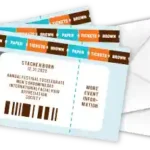Product Messaging is the way a brand communicates the value of its product to the audience. It helps customers understand what the product is, why they need it, and why it stands out. Good messaging grabs attention, builds trust, and drives sales. Without clear and compelling Product Messaging, even the best products can go unnoticed.
Key Elements of Effective Product Messaging
Effective Product Messaging must be clear, simple, and relevant. Customers should instantly grasp the product’s value. Avoid jargon and complex terms. Focus on what matters most to the customer. Ask yourself: Does this message solve a problem or fulfill a need?
Understanding Your Audience
Knowing your audience is crucial. Conduct surveys, interviews, and analyze customer data. Create buyer personas that represent different segments of your market. This helps tailor messages that speak directly to their needs and desires.
Crafting the Core Message
The core message should highlight the product’s unique benefits. What makes your product different? Why should customers care? Use emotional and rational appeals to connect with different types of buyers. Some customers respond to stories and feelings, while others need facts and figures.
Consistency Across Channels
Your Product Messaging should be consistent wherever your audience interacts with your brand. From your website to social media ads, the message should be the same. Consistency builds trust and reinforces your product’s value.
Testing and Refining Messages
Even the best messages need testing. A/B testing helps compare different versions to see what resonates best. Gather feedback from real customers and adjust accordingly. This ensures your messaging remains effective and relevant.
Storytelling in Product Messaging
Storytelling adds a human touch. Craft narratives that show how your product solves real problems. Use customer testimonials and case studies. People remember stories better than plain facts.
Visual and Verbal Alignment
Your words and visuals must work together. Use images, videos, and graphics that reinforce your message. A strong headline paired with a powerful image leaves a lasting impression.
Competitive Analysis
Study your competitors’ messaging. What are they doing well? Where do they fall short? Use this insight to position your product uniquely. Highlight areas where your product outshines the competition.
Common Mistakes in Product Messaging
Avoid overly complex messages. Focus on benefits, not just features. Customers care more about what the product can do for them than the technical details. Simplicity wins.
Product Messaging for Different Audiences
Tailor your messaging for different markets. B2B customers often need more detailed information, while B2C buyers prefer emotional appeals. Understand the nuances of each audience.
Measuring the Success of Product Messaging
Track key metrics like conversion rates, click-through rates, and customer feedback. These indicators show how well your messaging is performing. Adjust based on data to improve results.
Adapting to Market Changes
Markets evolve, and so should your messaging. Stay in tune with trends and customer needs. Be ready to pivot and refine your message to stay competitive.
Conclusion
Effective Product Messaging is crucial for conveying your product’s value and connecting with your audience. By understanding your audience, crafting a clear and compelling core message, maintaining consistency, and using storytelling, you can build trust and drive sales. Regular testing and refinement ensure your messaging remains relevant. Adapting to market changes and positioning your product effectively will keep you competitive and aligned with customer needs, fostering long-term success.






